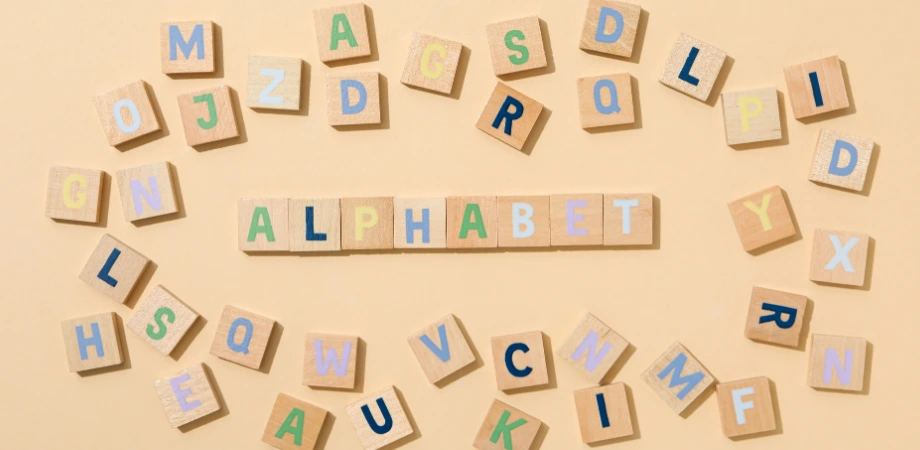Effective communication is vital in today’s globalized world, where interactions between individuals, organizations, and nations are increasingly frequent. However, cultural barriers to communication can pose significant challenges, hindering understanding and collaboration. To navigate this complexity, it is essential to adopt strategies and techniques that promote effective cross-cultural communication, such as website localization services. These services ensure that digital content is culturally and linguistically tailored to meet the specific needs of diverse audiences, enhancing communication and collaboration in culturally diverse settings. By implementing these effective strategies, individuals and organizations can foster better communication and achieve their goals.
Understanding Cultural Barriers to Effective Communication
Understanding cultural barriers to communication is crucial in our globalized world. These barriers often arise from differences in language, traditions, and social norms, which can lead to misunderstandings and reduced effectiveness in interactions. By recognizing and addressing these cultural barriers, individuals and organizations can enhance their ability to communicate across diverse cultural backgrounds.
Defining Culture and Communication
Culture encompasses a set of shared values, beliefs, and behaviors that shape how individuals communicate and relate to one another. It influences not only the language and words used but also the non-verbal cues, such as body language, gestures, and facial expressions that accompany communication. By recognizing the impact of culture on communication, individuals can navigate cultural barriers to communication more effectively.
The Impact of Cultural Differences on Interpretation

Cultural differences play a crucial role in the interpretation of messages in cross-cultural communication. Each culture has its own unique set of customs, traditions, and social norms that shape the way individuals perceive and interpret messages. For example, cultures that value directness and assertiveness may interpret more indirect communication styles as being evasive or dishonest. Similarly, non-verbal cues such as eye contact, personal space, and physical touch can vary greatly across cultures and lead to misinterpretation and misunderstandings, creating cultural barriers to communication. Understanding and appreciating these cultural differences is vital for effective communication and fostering mutual understanding.
Cultural Norms and Non-Verbal Communication
Non-verbal communication, including body language, gestures, and facial expressions, often plays a significant role in cross-cultural interactions and can present cultural barriers to communication. Cultural norms heavily influence the use and interpretation of these non-verbal cues. For instance, in some cultures, maintaining eye contact is seen as respectful and attentive, whereas in others, it may be considered rude or confrontational. Similarly, gestures and physical touch can have different meanings and connotations depending on the cultural context. Being aware of these cultural norms and adapting one’s non-verbal communication accordingly can help bridge the gap and enhance cross-cultural understanding and collaboration.
The Role of Stereotypes in Miscommunication
In cross-cultural interactions, stereotypes play a significant role in shaping communication and can often lead to miscommunication. By categorizing individuals based on preconceived notions, stereotypes can hinder effective communication between cultures and perpetuate misunderstandings.
Breaking Down Common Stereotypes
It is essential to challenge and break down common stereotypes to foster better cross-cultural communication. Stereotypes are oversimplified beliefs about a particular group of people and can lead to assumptions that may not accurately represent individuals within that culture, thus forming cultural barriers to communication.
For example, the stereotype that Asians are inherently good at math and technology can create the expectation that all individuals from Asian cultures possess these skills. This stereotype simplifies and generalizes a diverse range of talents and abilities, leading to miscommunication and underestimation of individuals’ true capabilities.
By promoting an understanding of the complexities and diversity within cultures, breaking down common stereotypes allows for more nuanced communication and a better appreciation of individual differences.
Consequences of Stereotyping in Cross-Cultural Interactions

The consequences of stereotyping in cross-cultural interactions can be detrimental to effective communication. Stereotypes reinforce biases and perpetuate negative attitudes, hindering collaboration and understanding between cultures, thereby creating significant cultural barriers to communication.
When individuals rely on stereotypes, they may fail to recognize and appreciate the unique perspectives, experiences, and values of individuals from different cultures. This can lead to misunderstandings, misinterpretations, and a breakdown in communication.
Moreover, stereotypes can create a power imbalance in intercultural interactions. When individuals are pigeonholed into predefined categories based on stereotypes, their voices may be marginalized, and their contributions undervalued. This can further alienate individuals and discourage open and meaningful communication.
Overcoming the influence of stereotypes is crucial for fostering inclusive and effective cross-cultural communication. By recognizing and challenging stereotypes, individuals can develop a deeper understanding of different cultural perspectives, increase empathy, and cultivate a more inclusive communication environment.
Language as a Barrier to Cross-Cultural Engagement
Language barriers represent a significant cultural barriers to communication in cross-cultural engagements, often leading to misunderstandings and misinterpretations. The challenge lies in conveying complex ideas and nuances accurately when there is no common language, risking important information getting lost or altered, particularly during translation. Effective communication strategies, such as using clear and simple language, active listening, and seeking clarifications, are essential for overcoming these obstacles.
Additionally, providing resources like interpreters or translation services can bridge the language gap, fostering a more inclusive environment where individuals feel comfortable to express themselves and ask for clarification, thus enabling meaningful cross-cultural interactions and collaborations despite the language challenges.
Nonverbal Signals and Misinterpretations Across Cultures

In cross-cultural communication, nonverbal signals play a significant role in conveying messages and establishing understanding. Body language and gestures, in particular, can vary greatly across different cultures, leading to potential misinterpretations and misunderstandings, which are significant cultural barriers to communication.
Significance of Body Language and Gestures
Body language and gestures are forms of nonverbal communication that go beyond spoken words. They can express emotions, attitudes, and intentions, providing additional context to verbal messages. Understanding the significance of body language and gestures is crucial for effective cross-cultural communication, as misinterpretations of these signals can create cultural barriers to communication.
Being aware of these cultural differences in body language and gestures allows individuals to adjust their own behavior and interpret the nonverbal cues of others accurately.
Recognizing and Respecting Different Nonverbal Cues
To navigate nonverbal communication challenges in cross-cultural interactions, it is essential to recognize and respect the nonverbal cues of different cultures, which helps in overcoming cultural barriers to communication. Here are some practical tips:
- Learn about cultural norms: Take the time to research and understand the nonverbal communication norms of the cultures you interact with. This can help you interpret and respond appropriately to nonverbal signals.
- Observe and adapt: Pay attention to the nonverbal cues of individuals from different cultures. Notice their body language, facial expressions, and gestures. Adapt your own nonverbal behavior to align with cultural expectations.
- Ask for clarification: If you are unsure about the meaning behind a nonverbal cue, don’t hesitate to ask for clarification. Culturally sensitive questions can help bridge the gap and foster better understanding.
- Respect personal space: Different cultures have different expectations regarding personal space. Be mindful of personal boundaries and avoid invading someone’s personal space, as it can make them uncomfortable.
- Be patient and open-minded: Misinterpretations and misunderstandings may still occur despite your best efforts. Approach cross-cultural communication with patience, openness, and a willingness to learn from your experiences.
By recognizing and respecting different nonverbal cues across cultures, individuals can enhance their cross-cultural communication abilities and build stronger connections with people from diverse backgrounds.
Embracing Cultural Diversity in Communication

In today’s globalized world, embracing cultural diversity in professional settings is crucial for overcoming cultural barriers to communication and enhancing team performance. Diverse teams offer a multitude of perspectives, contributing to innovative problem-solving and improved decision-making. Individuals from varied backgrounds bring unique viewpoints and communication styles, which enrich discussions and lead to a deeper understanding of complex issues.
Additionally, cultural diversity fosters adaptability and resilience, enabling teams to effectively navigate different cultural norms and business practices. Moreover, an inclusive environment where diverse contributions are valued boosts trust and collaboration, essential for driving success in multicultural contexts. Therefore, recognizing and leveraging cultural diversity is fundamental for organizations aiming to thrive in diverse and dynamic environments, overcoming cultural barriers to communication and building a solid foundation for future growth.
Cultural Barriers to Communication in Global Business
Cultural barriers to communication in global business can significantly hinder effective interactions and collaboration across different regions. These barriers arise from varying cultural norms, language differences, and distinct business practices, which can lead to misunderstandings and misinterpretations. Addressing these challenges is essential for fostering successful international business relationships and ensuring clear, effective communication.
Challenges Faced By International Teams
International teams in global business face numerous challenges when it comes to overcoming cultural barriers to effective communication. One of the most common obstacles is the language barrier, with team members from different countries struggling to communicate fluently and accurately. This can lead to misunderstandings, misinterpretations, and a lack of clarity in conveying ideas and information, all of which are significant cultural barriers to communication.
Another challenge is the difference in time zones. With team members located in various countries, scheduling meetings and coordinating work can be a logistical nightmare. It requires careful planning and flexibility to ensure that everyone’s availability aligns and that important discussions and decisions can take place in a timely manner.
Additionally, different work styles and cultural norms can create friction and hinder smooth collaboration. For example, some cultures prioritize hierarchical decision-making, while others emphasize a more egalitarian approach. These divergent perspectives and practices can lead to conflicts, misunderstandings, and an overall breakdown in effective communication within international teams, highlighting the significance of cultural barriers to communication.
Cross-Cultural Negotiation and Conflict Resolution
Cross-cultural negotiation and conflict resolution are essential skills for successfully navigating cultural barriers in global business. It requires a deep understanding and respect for cultural differences, as well as the ability to adapt and find common ground, which is crucial for overcoming cultural barriers to communication.
One strategy for bridging cultural gaps is to foster open and transparent communication. Encouraging team members to express their thoughts, concerns, and perspectives can help create a more inclusive and collaborative work environment. Active listening and empathy are also crucial in understanding the needs and motivations of individuals from diverse cultures.
Implementing cultural awareness and sensitivity training programs can provide team members with the knowledge and skills needed to navigate cross-cultural interactions effectively. These programs can help develop cultural intelligence, facilitate effective cross-cultural negotiation, and equip individuals with strategies to resolve conflicts and misunderstandings in multicultural environments, thereby addressing cultural barriers to communication.



